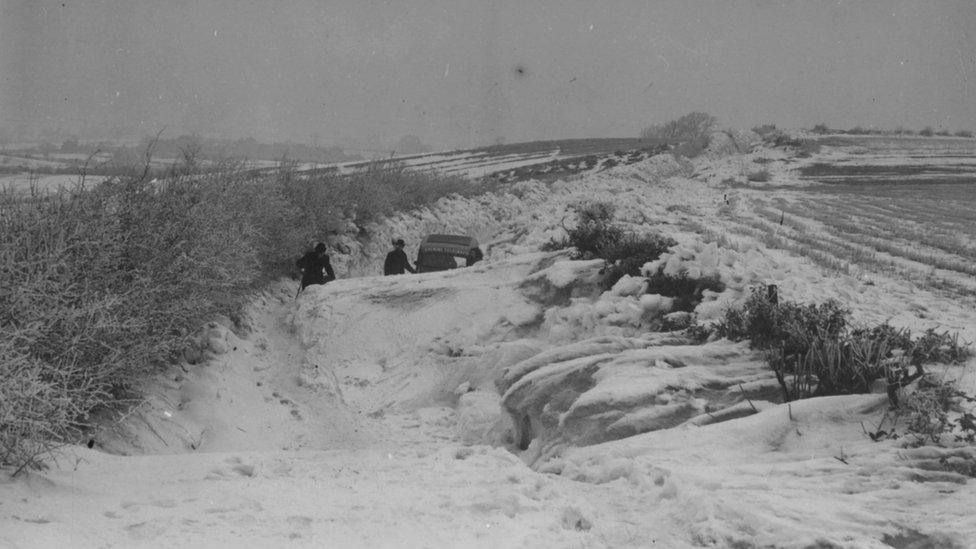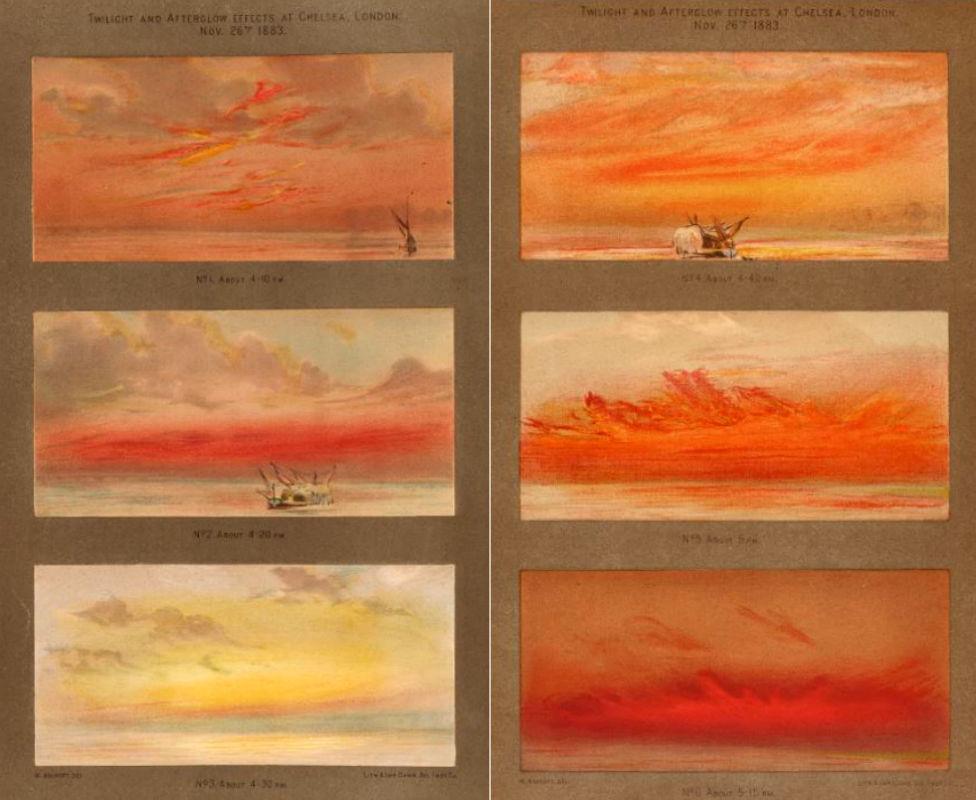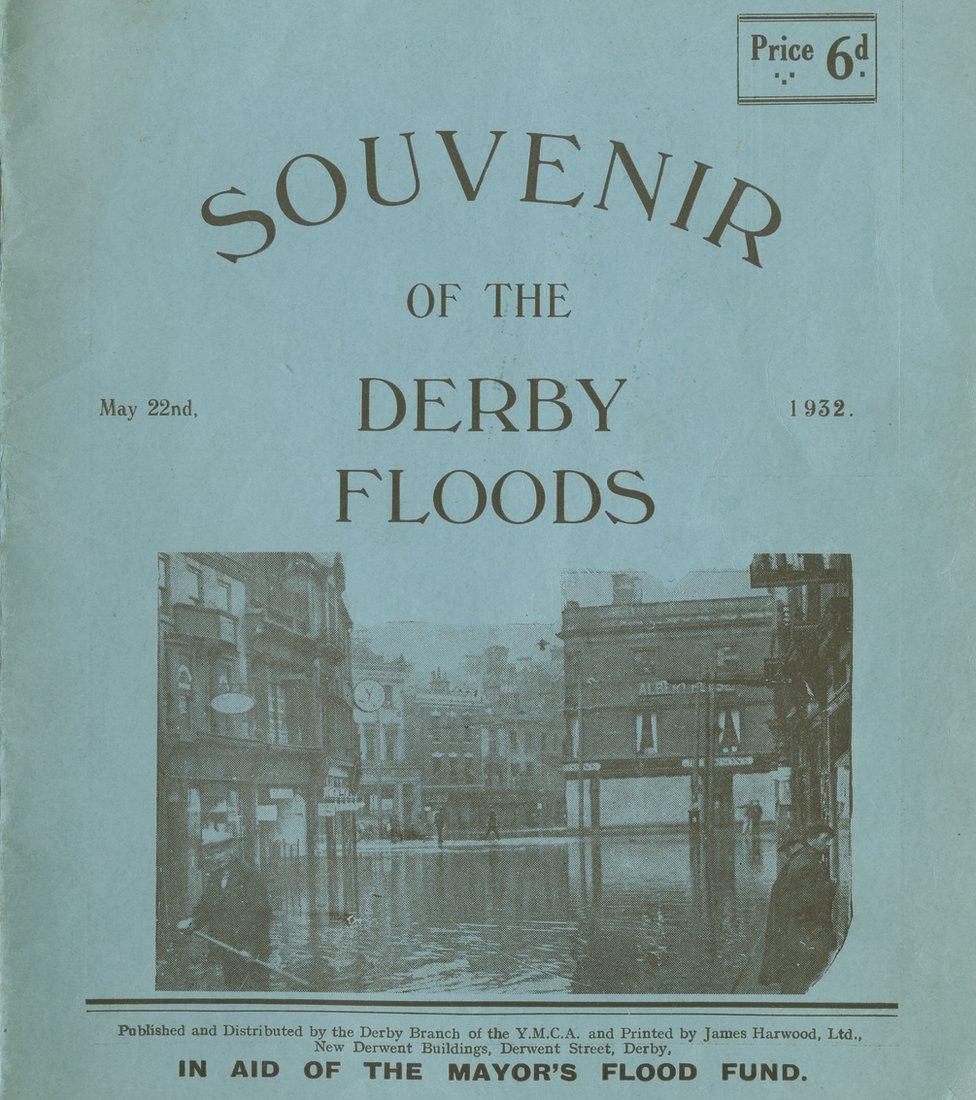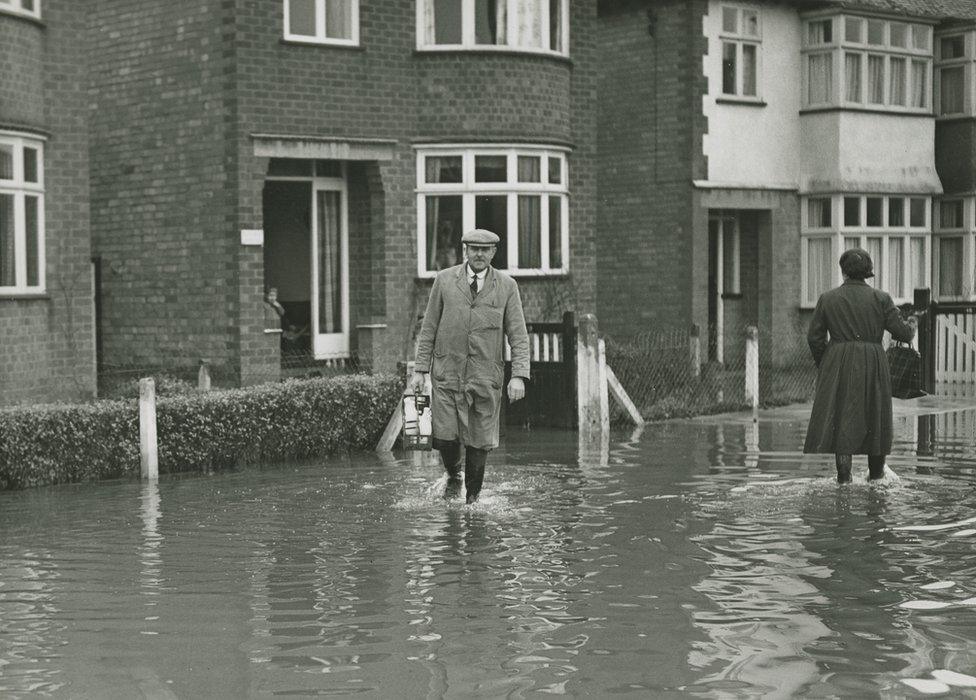Weather exhibition shows when the River Trent froze over
- Published

A frozen River Trent at Trent Bridge on 16 February 1895 (Manuscript and Special Collections MS 258/3/3)
Historic photographs including one showing the last time the River Trent froze over are to go on display in an exhibition about extreme weather.
The show at Lakeside Arts in Nottingham will explore people's own recordings and reactions to unusual weather throughout history.
Drawings of skies affected by ash cloud after the eruption of Mount Krakatoa in 1883 will also be displayed.
Curator Georgina Endfield said weather was "woven into the human experience".

Snow drifts, between Derby and Ashby, Hartshorne, Derbyshire in February 1947 (Manuscript and Special Collections RE/DOP/H42/62)
Professor Endfield said the explosion of Mount Krakatoa, in Indonesia, which killed about 40,000 people, had been perplexing for people in the UK.
Only a handful of experts knew what was causing the "crazy sunsets" that would have "terrified" many people, she said.
Prof Endfield said the exhibition aimed to explore how big world events such as Krakatoa are "interpreted locally".

Sunset effects caused by the eruption of the volcano on Krakatoa in 1883, observed and painted by William Ascroft (Manuscripts and Special Collections QE523.K7 )
The River Trent in Nottingham has not frozen over since February 1895 when the temperature was -1.81C (28.7F).
The ice was thick enough to skate and ride bicycles on, but curiously there was no snow during that period.
"It was the archetypal Victorian winter," said the curator.
"The Trent and [River] Thames froze over but people had lots of fun in what could have been a traumatic event."

Souvenir of the floods of the River Derwent in Derby in May 1932 (Manuscript and Special Collections RE/DOP/H42/23)
Floods feature heavily in the exhibition and Prof Endfield has found that these extreme events tend to "draw people together".
The Great Flood of 1932, in Derby, when the Markeaton Brook culvert overflowed during heavy rain, is an example of this, she said.
A souvenir booklet was produced to raise money for those affected, but it also celebrated how the city's people overcame the problems caused by the flooding.

Students skating on the frozen lake at University Park in Nottingham in the 1940s (Manuscript and Special Collections ACC 855/8)
However, she said extreme weather that caused bad harvests and food shortages, for example, tended to trigger the opposite effect and in some cases had led to rioting.
The exhibition opens on Thursday at the Weston Gallery, Nottingham Lakeside Arts, University Park, Nottingham.

A milkman delivers during a flood in Burton Joyce in January 1960 (Manuscript and Special Collections HRP/F/1/3/13)